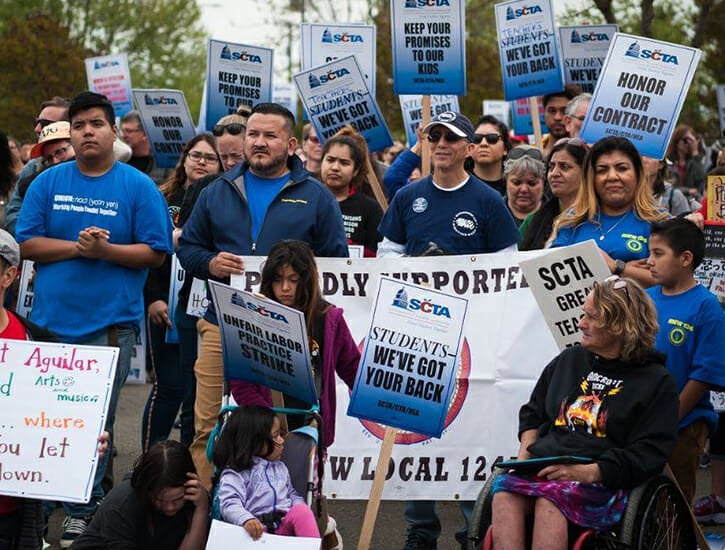

By JUDD MATSUNAGA, ESQ.
Did you know that the average 85-year-old will have an average of nine surgical procedures of different complexity in their lifetime? (Source: American College of Surgeons, Lee and Gawande, 2008). Surgical procedures may be offered to patients for several reasons. The most common surgeries in the U.S. are appendectomies, cataracts, joint replacement and C-sections.
At times, surgery is used as a diagnostic tool to determine if there is cancer present. Other times, surgeries, like heart bypass surgeries, can prevent fatal outcomes and ensure that your heart is functioning properly. Depending on the category, the most common surgeries typically includes: (Source: www.toplinemd.com/blog-news/6-most-common-surgical-procedures-in-the-us/)
● Cardiac procedures, including those that repair congenital disabilities or insert pacemakers.
These procedures include: cardiac ablation, stent placement, aortic aneurysm repair, heart bypass surgery angioplasty, aortic valve replacement, pacemaker implantation, cardiac catheterization, and left ventricular assist device (LVAD) implantation.
● Oncological surgeries, including diagnostic procedures, tumor removals, and biopsies.
Oncological surgery procedures are designed to diagnose and treat cancer. A biopsy is the most common surgery in the U.S. for cancer. Biopsies include: bone marrow biopsies, needle biopsies, ultrasound-guided biopsies, liver biopsies, kidney biopsies, aspiration biopsies, prostate biopsies, skin biopsies, surgical biopsies, and CT scan-guided biopsies.
● Ophthalmological surgeries, including removing cataracts and laser surgeries that repair retinal tears.
The most common surgery in the U.S. that occurs on the eyes is cataract surgery. Cataracts develop naturally and other health conditions may cause them over time. As a result of cataract growth, your eyes will become cloudier, and it will be harder to see.
During cataract surgery, the lens of the eye will be removed and replaced with an implant that allows you to see clearly again.
● Orthopedic surgeries, which include those that repair broken bones or tendons and those designed to replace the hip or knee.
Most orthopedic surgeries are designed to help you feel your best and ease the symptoms of aging tendons and bones. The most common types of orthopedic surgery performed in the U.S. include: knee replacement surgery, ACL repair surgery, ankle replacement surgery, bone fracture repair surgery, hip replacement surgery, shoulder replacement surgery, and herniated disc surgery.
● General procedures, including appendectomies and weight-loss surgeries.
An appendectomy is the most common surgery in the U.S. when it comes to general surgery. An appendectomy is typically suggested if you’re suffering from appendicitis, inflammation, and infection of the appendix. The appendix is not an organ that is necessary for our health, so it can be removed.
Another type of general surgery is weight-loss surgery.
● Transplant surgeries, which can include kidney transplants and liver transplants.
Transplants from living donors or deceased donors are an effective way to reverse the signs of certain diseases and dramatically prolong the life of those who receive them. Some of the most common transplants that are performed in the U.S. include: lung transplants, heart transplants, kidney transplants, liver transplants, pancreas transplants, bone marrow transplants, and corneal transplants.
Qualifying for a transplant is a strenuous process that requires a great deal of vetting.
Regardless of the type of surgery, common sense would tell you that it’s going to take a thin, frail patient longer to recover than a patient with “more meat on the bones.” Have you ever seen a thin person return from a 2-3-week hospital stay recovering from surgery? Skin and bone (at best), right? It would have been better if the patient had gone into the hospital another 10-20 pounds heavier with more muscle.
Now, science is finding what we’ve known all along. Research shows that patients with low muscle mass face higher recovery risks, including lower survival rates after trauma or burn injuries, due to a lack of muscle protein. In cancer patients, muscle loss during treatment is associated with worse outcomes, including higher recurrence rates and reduced survival.
According to a Sept. 4 article in The Epoch Times, “Surgical stress causes a loss of muscle mass and strength,” says Robert Wolfe, a professor of geriatrics and expert in muscle metabolism. “This is particularly problematic for [the] elderly, as often they are close to a functional threshold, and it is very difficult for an older person to regain lost muscle.”
“During critical illness, advanced cancer, or severe injury, the body’s need for amino acids spikes,” Wolfe said. “These amino acids, drawn from muscle breakdown, play a crucial role in immune function, wound healing, and overall recovery. If the body doesn’t have enough muscle to supply these vital nutrients, recovery can be impaired.”
Here’s the good part — new research says there’s a secret weapon for recovery called “Prehab.” Prehabilitation (prehab) is the process of strengthening the body before surgery or treatment to improve recovery outcomes. It involves targeted exercises that build muscle and enhance physical resilience, helping patients better withstand the physical stress of medical procedures.
A 2021 study of 57 patients, published in the Annals of Surgery, found that a three-week prehabilitation program with aerobic and resistance training reduced postoperative complications by nearly 60% in high-risk colorectal surgery patients.
Prehabilitation also affects mental health. Strengthening the body before surgery boosts confidence and reduces anxiety, fostering a positive mindset that aids recovery.
“Surgery places considerable stress on the body, triggering an immediate hormonal response that initiates muscle breakdown. The release of cortisol during surgery starts this process,” Dr. Derek Papp, an orthopedic surgeon, told The Epoch Times. “Post-surgery, immobility and reduced activity further accelerate muscle atrophy.”
A 2021 study published in Nutrients found that muscle tissue begins breaking down within 48 hours of inactivity. Research in the British Journal of Surgery found that 39% of 173 patients experienced significant muscle loss after major abdominal surgery, increasing the risk of death within one year.
“Think of it as building a reserve,” Papp told The Epoch Times. “Stronger muscles before surgery better equip you to handle the physical demands of recovery. It’s like going into battle with armor.
“Structured prehabilitation exercises, particularly strength training, bolster the body’s resilience to surgical stress, resulting in better outcomes, shorter hospital stays, and fewer postoperative complications.”
Prehabilitation isn’t just for surgery — it’s also crucial for patients undergoing chemotherapy and radiation. Cancer treatments can cause significant weight loss, much of it involving the loss of skeletal muscle — a common condition known as cancer cachexia. It reduces strength and physical function, weakening the body’s ability to withstand and recover from treatment.
Furthermore, a study in Current Opinion in Supportive and Palliative Care found that preserving muscle mass during chemotherapy reduces toxic side effects and improves survival rates. Stronger patients fare better, while those with muscle loss face higher risks of severe complications.
Focusing on muscle strength helps patients better endure treatment, leading to faster recovery and improved outcomes, Scott Capozza, a physical therapist at Yale New Haven Health specializing in oncology, told The Epoch Times. Research shows that patients who engage in prehabilitation before chemotherapy experience fewer side effects and quicker recovery between treatment cycles.
“Building muscle can be especially challenging when dealing with illness or injury. During this time, maintaining or building muscle might require modified exercises and a more cautious approach to ensure patients are as strong as possible for the treatment Capozza said. He tailors strategies to help patients build strength even in these difficult circumstances.
If an injury limits one part of the body, focus on strengthening the areas that are still mobile. For example, if leg mobility is restricted, prioritize upper-body exercises such as seated presses, rows, or arm curls. If the upper body is limited, concentrate on lower-body movements such as leg presses, gentle squats, or seated leg extensions. This approach strengthens what’s possible without worsening existing conditions.
Strength training doesn’t have to require a gym. There are home workouts that can be done using everyday items. These might include sit-to-stand exercises, step-ups, or reaching and lifting movements that mimic tasks required after surgery. Functional training prepares muscles for the specific challenges of recovery, enhancing both strength and coordination.
Resistance bands offer a flexible, low-impact way to build muscle without over straining joints or injured areas. They are especially effective for targeting smaller muscle groups or providing a gentle workout. Start with light resistance, gradually increasing as strength improves.
Starting with lighter weights, fewer repetitions, or simpler movements is key to preventing injury and ensuring muscles adapt. Gradually increase intensity as strength improves.
Core strength is vital for overall stability and recovery. Exercises such as planks, bridges, or leg lifts, whether done seated or standing, stabilize the torso, improve posture, and reduce injury risk during recovery.
“Core strength is essential for healing,” Capozza said. “The core muscles, from the shoulders to the hips, support the entire body, especially during recovery.”
Finally, older adults must pay closer attention to their diet, particularly protein, to support muscle repair and recovery. With age, our bodies experience anabolic resistance, which means that eating protein or amino acids doesn’t stimulate muscle building as much as when we were younger. Protein-rich foods such as lean meats, fish, eggs, and plant-based options such as beans and tofu support muscle growth.
Judd Matsunaga, Esq., is the founding partner of the Law Offices of Matsunaga & Associates, specializing in estate/Medi-Cal planning, probate, personal injury and real estate law. With offices in Torrance, Hollywood, Sherman Oaks, Pasadena and Fountain Valley, he can be reached at (800) 411-0546. Opinions expressed in this column are not necessarily those ofThe Rafu Shimpo.
 The 'Boat' Has Arrived
The 'Boat' Has Arrived
 Wordle today: The answer and hints for April 27, 2025
Wordle today: The answer and hints for April 27, 2025
 NYT mini crossword answers for April 27, 2025
NYT mini crossword answers for April 27, 2025
 Huawei’s net profit in first half of 2023 sees a 218% year
Huawei’s net profit in first half of 2023 sees a 218% year
 The 'Boat' Has Arrived
The 'Boat' Has Arrived
 Total sales of sedans, MPVs, and SUVs in China to see 1.3% y
Total sales of sedans, MPVs, and SUVs in China to see 1.3% y
 Geely’s Zeekr tops J.D. Power ranking of EV customer satisfaction in China · TechNode
Geely’s Zeekr tops J.D. Power ranking of EV customer satisfaction in China · TechNode
 NYT Connections hints and answers for April 27: Tips to solve 'Connections' #686.
NYT Connections hints and answers for April 27: Tips to solve 'Connections' #686.
 Baanx Announces its Next Office in Europe
Baanx Announces its Next Office in Europe
 NYT Strands hints, answers for April 27
NYT Strands hints, answers for April 27
 Duet USD Pool Live on Ellipsis Finance
Duet USD Pool Live on Ellipsis Finance
 Barcelona vs. Real Madrid 2025 livestream: Watch Copa del Rey for free
Barcelona vs. Real Madrid 2025 livestream: Watch Copa del Rey for free
 Alibaba VP denies acquisition of former exec’s cross
Alibaba VP denies acquisition of former exec’s cross
 TikTok could lose over $500 million in US e
TikTok could lose over $500 million in US e
 ‘Fresh Off the Boat’ to Premiere Feb. 4
‘Fresh Off the Boat’ to Premiere Feb. 4
 Kuaishou sees nearly 30% revenue growth in Q2, boosted by e
Kuaishou sees nearly 30% revenue growth in Q2, boosted by e
 Contra Vance
Contra Vance
 Between a Strike and a Hard Place
Between a Strike and a Hard Place
 APENFT Marketplace Livestreams With TRON Founder H.E. Justin Sun
APENFT Marketplace Livestreams With TRON Founder H.E. Justin Sun
 Thing Untweetable
Thing Untweetable
JACL Announces 2024 Japanese American of the Biennium AwardeesINTO THE NEXT STAGE: 'Cobra Kai' — Coming to a Dojo Near YouWirex Turns 10: A Decade of Innovation in How the World PaysBlockchain Forum in Moscow: MustBringing ‘Defining Courage’ to USCINTO THE NEXT STAGE: 'Cobra Kai' — Coming to a Dojo Near YouCOCA Wallet Reaches New Milestone: $COCA Token Is Now LiveUVA vs. CSU basketball livestreams: Game time, streaming dealsSadao Munemori Post 321 Presents ScholarshipNisei Memorial VFW Post 1961 to Hold Memorial Day Service at GVJCI Explosive California Wildfires Could Burn into December Oshogatsu Goes Virtual Cerritos High School Japanese Language Class Elicits Support Nisei Week: President's Message NJAHS to Celebrate 40th Anniversary A Talent Well Beyond the Dojo Helping Out During Little Tokyo’s Time of Need Faith UMC to Host Discussion of ‘Kagemusha’ Local Recipients of 2021 Foreign Minister’s Commendations Named Biden to Nominate Rahm Emanuel as Ambassador to Japan
0.1658s , 9920 kb
Copyright © 2025 Powered by 【video lucah ismail izzani】IT PAYS TO KNOW: Build Muscle Before Surgery,Global Hot Topic Analysis